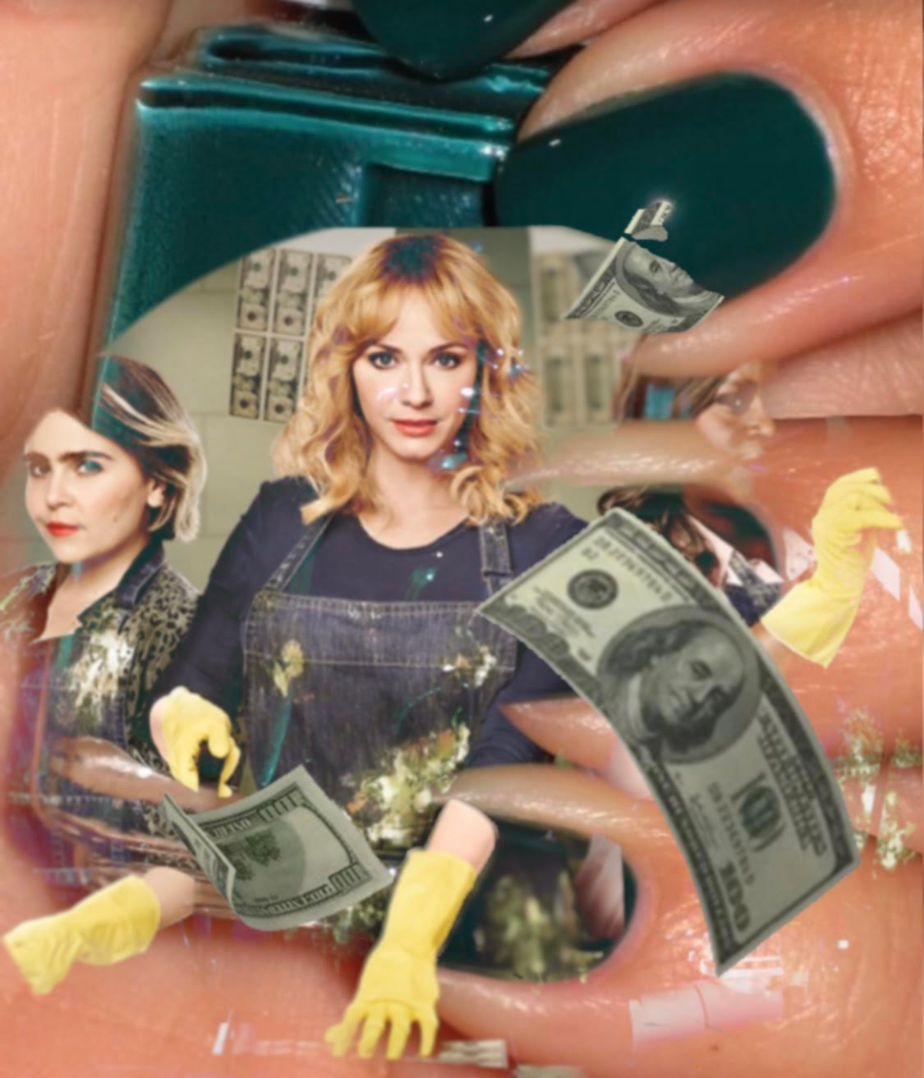In a series called Mondo Bullshittio, let’s talk about some of the most glaring hypocrisies in pop culture… and all that it affects.
At the end of season three, episode eight of Good Girls, entitled “Nana” (as in, “Na na, this gender stereotype ain’t right”) the trio of women comprised of Elizabeth Boland (Christina Hendricks), Ruby Hill (Retta) and Annie Marks (Mae Whitman) seemed to be on a small high. Not just from the fumes of the products they use to counterfeit their money, but from the momentary belief that the cops were long off their trail. Alas, this serene moment of them laughing, counterfeiting and sipping coffee (or whatever) to the tune of The Monkees’ “As We Go Along” is negated by one brief final scene after Beth proudly holds up her perfect replica of a ten dollar bill. The same one that a fed holds up to the light in the following cut as he remarks, “Third one this month out of Detroit. Labs came back butyl acetate, chromium oxide and camphor.” He then pauses to ask his as of yet unseen associate (likely superior), “Car paint?” She appears onscreen to reveal her gender and insist, “Nail polish.” He adds, “Ew.” She concludes, “It’s a woman.” He says once again, “Ew.” Barring the fact that his “subtle” daintiness seems designed to make him come across somehow as gay (after all, gay men are grossed out by women for different reasons than straight men), there is another vexingly obvious stereotype to the whole exchange.
This being, of course, that because the base of the counterfeit money is crafted out of nail polish, then surely a woman must be the one responsible for the crime. A man wouldn’t 1) use nail polish on a personal level or 2) be shrewd enough to brandish it as a means to throw feds off the scent (pun intended) of his double-pronged brilliance. Because, as far as a network like NBC is concerned, these are still very non-gender neutral times (didn’t they give us enough progressiveness with the promiscuous layabouts on Friends in the 90s anyway? How much more do you want them to consider their choice in how best to be “open” to the nuances of “alternative” lifestyles?). Worse still, that the faux gay federal agent assumed that because a man was likely the criminal mind behind the operation (only men are literally ballsy enough to commit crimes, after all), he would use car paint. Something masculine to show off his brawn in illegal activities. That the female sleuth in this dynamic could herself be narrow-minded enough to write off any other gender than “woman” capable of using this polymer-based substance is telling of just how non-“outside the box” the mainstream has remained in how they choose to profile not just criminals but “ordinary people.”
The absurd black-and-white nature of a presumption like, “Only women wear nail polish therefore only a woman could be responsible for creating this highly effective ten-dollar bill substitute,” is telling of a larger, seemingly unshakeable issue. One of the same variety that still prompts expecting parents to paint a room either blue or pink upon a baby’s gender reveal (or, as Juno taught us, yellow for when you want to be pointedly “neutral”). This inherent inability for people to separate established gender norms from “other options” is reinforced precisely because of something as seemingly offhanded as this nail polish assumption in a show like Good Girls. A comment made all the worse because it is featured on a show touting “feminist” rhetoric. But how feminist is it that now, the authorities will likely start pilfering various Detroit nail salons in search of the presumed female culprit (do not men get manicures and pedicures too, even in Motor City)?
The only exception to the rule of their stereotyping would be another boilerplate surmisal about the sort of “ilk” that might wear nail polish: gays or drag queens (what about goths, asshole?). Throwing in a half-hearted accusation at someone “off color” (no race allusion intended) for good measure if the writers thought about it long enough to make the attempt at “overreaching” so-called political correctness. But they would not think about it because, to them, the very idea that any being other than a female would wield nail polish as an instrument of crime would simply not occur. And it is for this reason that the insidiousness of “gender roles” and “gender appropriateness” continues to be perpetuated in the part of America that rests between California and New York.
With every unwittingly conservative–but in their minds, “cautiously liberal”–American’s faith maintained in traditional values thanks to a crime show assuring them that ladies use nail polish to counterfeit, whereas a man would probably use car paint. Or better yet, would not be “stupid” enough to get caught at all with such a gender-telling accoutrement.






















